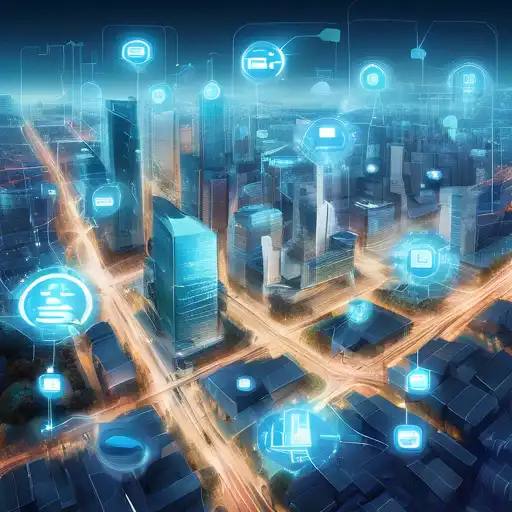Introduction to IoT in Smart Cities
The Internet of Things (IoT) is revolutionizing the way urban areas operate, making cities smarter, more efficient, and more sustainable. By integrating IoT devices and technologies, smart cities are able to collect and analyze data to improve infrastructure, public services, and the quality of life for their residents.
Key Components of IoT in Smart Cities
Smart cities rely on several key components of IoT to function effectively. These include:
- Sensors and Devices: These are the eyes and ears of the city, collecting data on everything from traffic patterns to air quality.
- Connectivity: High-speed internet and wireless networks ensure that data can be transmitted quickly and reliably.
- Data Analytics: Advanced algorithms analyze the collected data to identify trends and make predictions.
- User Interfaces: Apps and dashboards allow citizens and city officials to interact with the IoT ecosystem.
Benefits of IoT in Smart Cities
The implementation of IoT in smart cities offers numerous benefits, including:
- Improved Traffic Management: IoT devices can monitor traffic flow in real-time, reducing congestion and improving commute times.
- Enhanced Public Safety: Smart surveillance systems and emergency response technologies make cities safer.
- Energy Efficiency: Smart grids and lighting systems reduce energy consumption and lower costs.
- Environmental Monitoring: Sensors track pollution levels, helping cities to address environmental concerns proactively.
Challenges and Considerations
Despite its many advantages, the integration of IoT in smart cities is not without challenges. Privacy concerns, cybersecurity risks, and the high cost of implementation are significant hurdles that must be addressed. Additionally, ensuring equitable access to technology is crucial to prevent the digital divide from widening.
Future Prospects
The future of IoT in smart cities is bright, with continuous advancements in technology paving the way for even more innovative applications. From autonomous vehicles to AI-powered city management systems, the possibilities are endless. As cities continue to grow and evolve, IoT will play a pivotal role in shaping sustainable and livable urban environments.
For more insights into how technology is transforming urban areas, check out our articles on Digital Transformation in Urban Planning and The Future of Smart Infrastructure.
